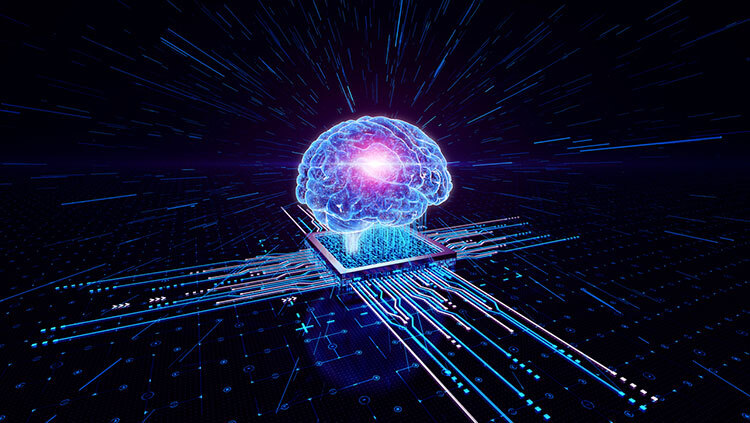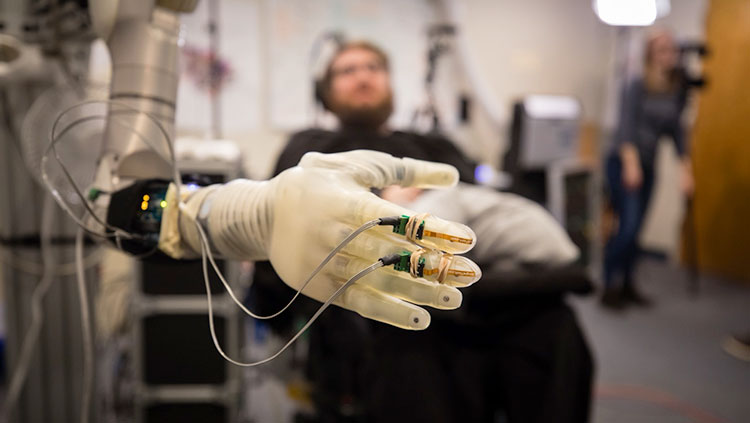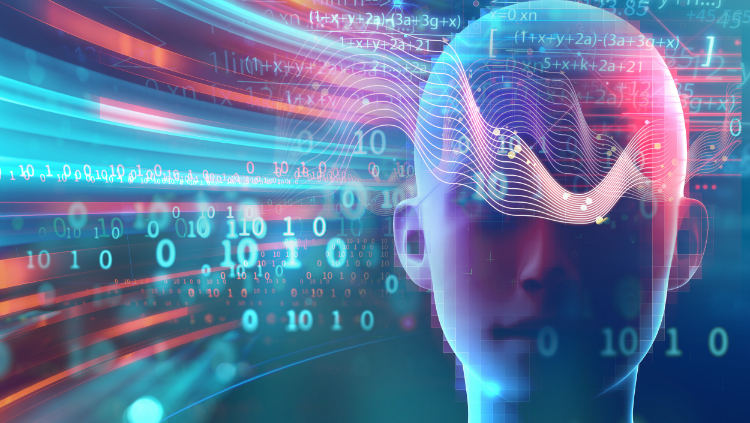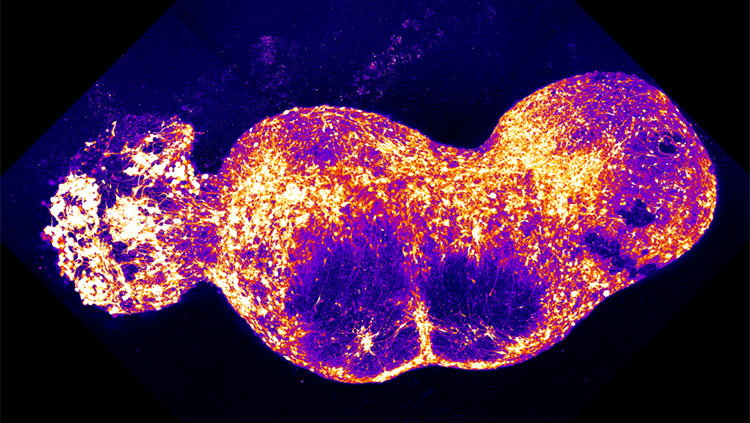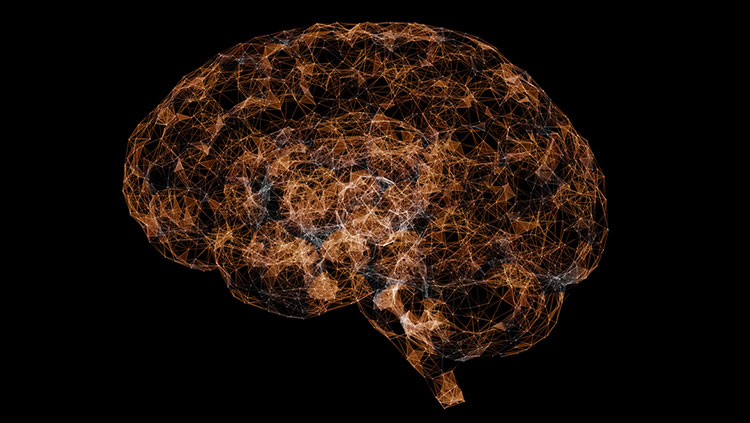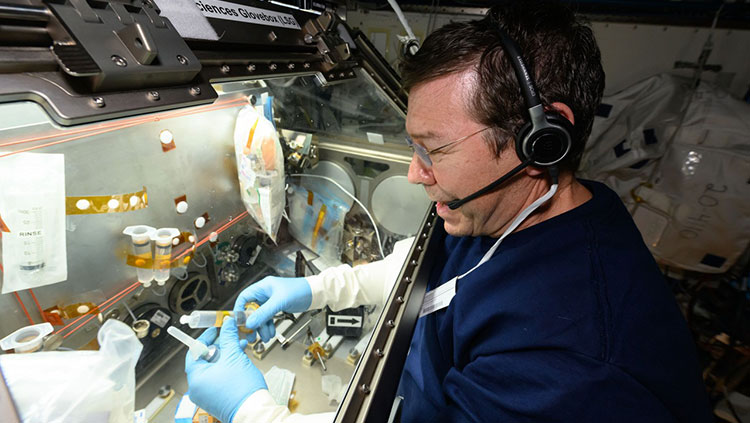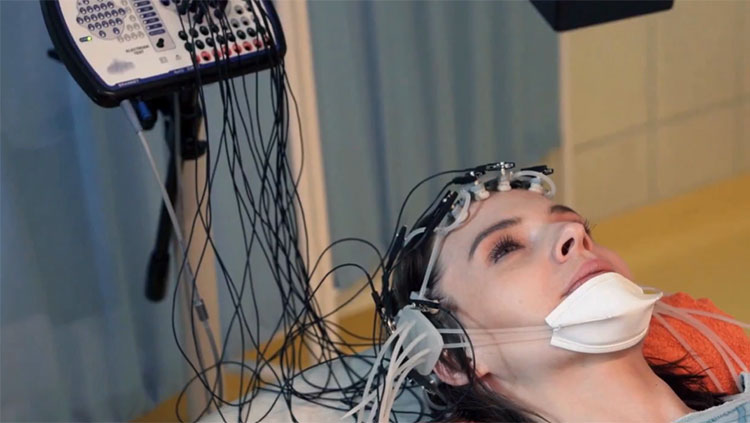Activating Brain Circuits with Transcranial Stimulation
- Reviewed18 Sep 2023
- Author Knvul Sheikh
- Source BrainFacts/SfN
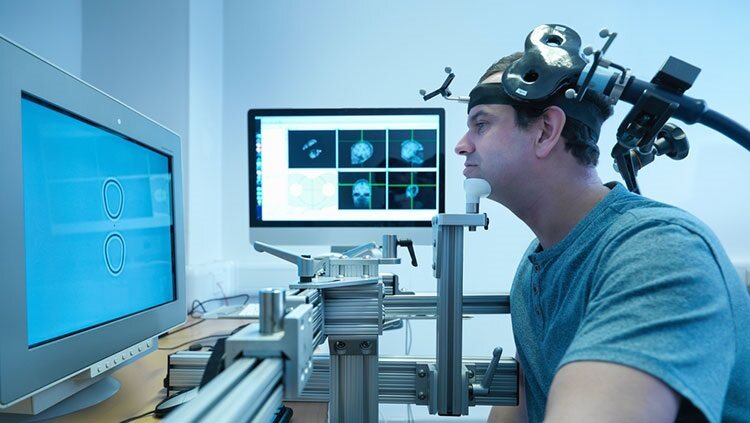
Neurons in our brain typically communicate through electrical and chemical signals within the brain. Researchers have used pulses of magnetic fields and electrical currents over the outside of the skull to generate weak electrical currents in brain tissue, activating neurons, in hopes of treating diseases and disorders.
A few noninvasive treatments can stimulate cells near the surface of the brain: transcranial magnetic stimulation (TMS) and transcranial electrical stimulation techniques like transcranial direct current stimulation (tDCS) or transcranial alternating current stimulation (tACS). All of these treatments use magnetic fields or low electrical currents to alter neural activity in a specific region of the human cortex and, indirectly, deeper brain structures to which it connects.
During TMS therapy, people sit in a chair while a nurse or technician places a magnetic stimulator against their head. The device painlessly delivers brief magnetic pulses to the brain, similar in strength to those generated by magnetic resonance imaging (MRI) devices, but highly targeted. For people with depression, pulses are focused over their left prefrontal cortex. Here, they generate electrical currents among neurons, which over time adjust neural circuits, and may help change the person’s mood.
Similarly, tDCS uses one or two one thousandths of an Amp (or one to two milliamperes) of direct current to tune the brain. Although research into tDCS and its close cousin, tACS, is in its early stages, these techniques offer clear advantages over deep brain stimulation and even over TMS. Generally, people report only a slight tingling or tapping feeling on their head as the therapy is administered. The devices used to administer these therapies are also cheaper, more portable, and lower tech compared to TMS.
The U.S. FDA has approved the use of TMS devices for depression and obsessive-compulsive disorders. Meanwhile, tDCS is not FDA-approved but is sometimes used in treatment for major depressive disorder in areas like the European Union, Australia, and Mexico. Currently, there is no consensus among scientists on the mechanisms for how these treatments work, the best way to position the stimulation devices, or the right frequency and length of stimulation on a particular brain region for a given treatment.
Adapted from the 8th edition of Brain Facts by Knvul Sheikh.
CONTENT PROVIDED BY
BrainFacts/SfN
References
Armitage, H. (2015). Gene-editing method halts production of brain-destroying proteins. Science. http://www.sciencemag.org/news/2015/10/gene-editing-method-halts-production-brain-destroying-proteins
Belluck, P. (2017). New Electrical Brain Stimulation Technique Shows Promise in Mice. New York Times. https://www.nytimes.com/2017/06/01/health/new-electrical-brain-stimulation-technique-shows-promise-in-mice.html
Boseley, S. (2001). Parkinson’s Miracle Cure Turns into a Catastrophe. The Guardian. https://www.theguardian.com/uk/2001/mar/13/highereducation.education
Chakrabarty, T., Ogrodniczuk, J., & Hadjipavlou, G. (2016). Predictive Neuroimaging Markers of Psychotherapy Response: A Systematic Review. Harvard Review of Psychiatry, 24(6), 396–405. https://doi.org/10.1097/HRP.0000000000000132
Costandi, M. (2015). Gene therapy rescues dying cells in the brains of Alzheimer’s patients. The Guardian. https://www.theguardian.com/science/neurophilosophy/2015/aug/28/gene-therapy-rescues-dying-cells-in-the-brains-of-alzheimers-patients
Deep Brain Stimulation for Movement Disorders. (2017). University of Pittsburgh. http://www.neurosurgery.pitt.edu/centers-excellence/epilepsy-and-movement-disorders-program/deep-brain-stimulation-movement-disorders
Deep Brain Stimulation. (2022). Cleveland Clinic. https://my.clevelandclinic.org/health/treatments/21088-deep-brain-stimulation
Deep Brain Stimulation. (2017). Mayo Clinic. http://www.mayoclinic.org/tests-procedures/deep-brain-stimulation/home/ovc-20156088
Earlier Diagnosis. (2017). Alzheimer’s Association. http://www.alz.org/research/science/earlier_alzheimers_diagnosis.asp
Fisher, E. (2014). Psychiatrists Embrace Deep-Brain Stimulation. Scientific American. https://www.scientificamerican.com/article/psychiatrists-embrace-deep-brain-stimulation/
Gay, M. (2015). Brain New World. The Scientist. http://www.the-scientist.com/?articles.view/articleNo/44079/title/Brain-New-World/
Hardesty, L. (2015). Predicting change in the Alzheimer’s brain. MIT News. Massachusetts Institute of Technology. http://news.mit.edu/2015/predicting-change-alzheimer’s-brain-1006
Kasten, F. H., & Herrmann, C. S. (2017). Transcranial Alternating Current Stimulation (tACS) Enhances Mental Rotation Performance during and after Stimulation. Frontiers in Human Neuroscience, 11, 2. https://doi.org/10.3389/fnhum.2017.00002
Mancuso, L. E., Ilieva, I. P., Hamilton, R. H. and Farah, M. J. (2016). Does Transcranial Direct Current Stimulation Improve Healthy Working Memory?: A Meta-analytic Review. Journal of Cognitive Neuroscience, 28, 8, 1063-1089. https://doi.org/10.1162/jocn_a_00956
Morishita, T., Fayad, S. M., Higuchi, Ma. Et al. (2014). Deep Brain Stimulation for Treatment-resistant Depression: Systematic Review of Clinical Outcomes. Neurotherapeutics, 11, 475–484. https://doi.org/10.1007/s13311-014-0282-1
Nutt, A. E. (2016). The Mind’s Biology. The Washington Post. https://www.washingtonpost.com/sf/national/2016/02/19/brain-hacking-the-minds-biology/
Oremus, W. (2013). Spark of Genius. Slate. http://www.slate.com/articles/technology/superman/2013/04/tdcs_and_rtms_is_brain_stimulation_safe_and_effective.html
Orenstein, D. (2012). People with paralysis control robotic arms using brain-computer interface. Brown University. https://news.brown.edu/articles/2012/05/braingate2
Piore, A. (2015). A Shocking Way to Fix the Brain. MIT Technology Review. https://www.technologyreview.com/s/542176/a-shocking-way-to-fix-the-brain/
Rotsides, J., Mammis, A. (2013). The Use of Deep Brain Stimulation in Tourette’s Syndrome. Medscape. http://www.medscape.com/viewarticle/813944
Schmidt, H. D., Shelton, R. C., & Duman, R. S. (2011). Functional biomarkers of depression: diagnosis, treatment, and pathophysiology. Neuropsychopharmacology, 36(12), 2375–2394. https://doi.org/10.1038/npp.2011.151
Scudellari, M. (2016). Gene Therapy Might Be the Best, and Perhaps Only, Chance at Curing Brain Diseases. Newsweek. http://www.newsweek.com/2016/05/06/gene-therapy-brain-disease-453217.html
She, A. (2016). CRISPR in Neuroscience: How Precision Gene Editing May Unravel How the Brain Works (and Why it Sometimes Doesn’t). SITNBoston. http://sitn.hms.harvard.edu/flash/2016/crispr-in-neuroscience-how-precision-gene-editing-may-unravel-how-the-brain-works-and-why-it-sometimes-doesn’t/
Sheikh, K. (2016). Eavesdropping on the brain. Scienceline. New York University. http://scienceline.org/2016/01/eavesdropping-on-the-brain/
Sheikh, K. (2017). Cell Therapy 2.0: Reprogramming the Brain’s Own Cells for Parkinson’s Treatment. Scientific American. https://www.scientificamerican.com/article/cell-therapy-2-0-reprogramming-the-brain-rsquo-s-own-cells-for-parkinson-rsquo-s-treatment/
Wolters Kluwer Health: Lippincott Williams and Wilkins. (2016). Brain scans could help predict response to psychotherapy for anxiety and depression. ScienceDaily. https://www.sciencedaily.com/releases/2016/11/161110115340.htm
Zeliadt, N. (2017). Brain Scans May Forecast Autism in Babies. Scientific American. https://www.scientificamerican.com/article/brain-scans-may-forecast-autism-in-babies/
What to Read Next
Also In Tools & Techniques
Trending
Popular articles on BrainFacts.org



